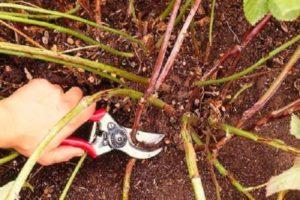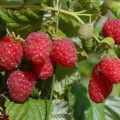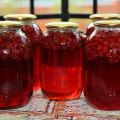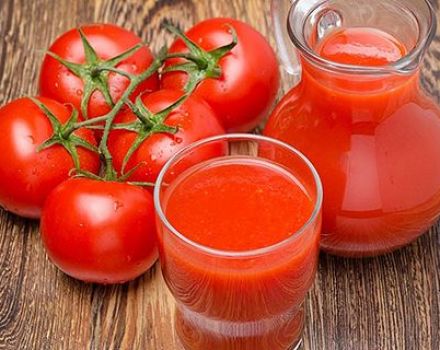The best varieties of black raspberries, planting, growing and care
Raspberry fruits contain many beneficial substances that have a beneficial effect on human health, and black raspberries contain even more antioxidants. The cultivation of black raspberries has become very popular among gardeners, it is unpretentious, since it almost does not need to be looked after.
Black raspberry and its features
Black and red raspberries differ in the composition of nutrients, the size of berries, and taste. The peculiarity of black raspberry is its sweet taste with honey, tart aftertaste and slight sourness. All this is due to the amount of vitamins and minerals, digestible carbohydrates and acids.
Black raspberries contain more sucrose, fructose, but less vitamin C and 2 times more calories per 100 g. Usually, the size of the fruit is smaller than that of red and yellow varieties. Black raspberries are sometimes confused with blackberries. The main difference is that the berries are easily removed from the receptacle, the shoots are strewn with fruits collected in large brushes.
An unusual property of black raspberry shoots is that it does not multiply by shoots, but thanks to the tops of the branches leaning to the soil, it starts up roots and sprouts. After that, it should be cut into 3-5 buds.
Description and characteristics of the culture
Black raspberry is a perennial plant of the Rubus genus, of the Pink family. The bush grows up to 2 m, the shoots lean to the soil in the form of an arc, in the first year of life the length increases, in the second year flowers and berries are formed. Shoots are flexible, young green with small thorns, branches of the second year are brown-burgundy with a bluish bloom.
Leaves alternate with 5 lobes, oval in shape, with small denticles along the edge. The leaf is more pubescent from above than from below, the lower part is distinguished by white pile. They resemble red raspberry leaves, but smaller.

Flowers are collected in a cluster in large numbers. They consist of 5 white, oval-pointed petals with 5 light green sepals.
The growing season for the plant begins 1-2 weeks earlier than that of red raspberries.
It blooms in late May - mid June, it lasts 1.5-3 weeks. After that, fruits are formed, which change their color as they grow and ripen, starting with green, green-white, pink-red, bright red, purple-black.The berries are pubescent, can be like a blackberry with a light bluish bloom.
Fresh berries can be stored longer than red ones, since they have a denser structure and hardly wrinkle during transportation.
The ability to reproduce black raspberries took over from blackberries, the branches of the second year of life, if not tied up, come into contact with the soil, form not berries at the end (penetrating crown), but a thickening from which white roots sprout. Therefore, they can be cut and planted like a seedling.
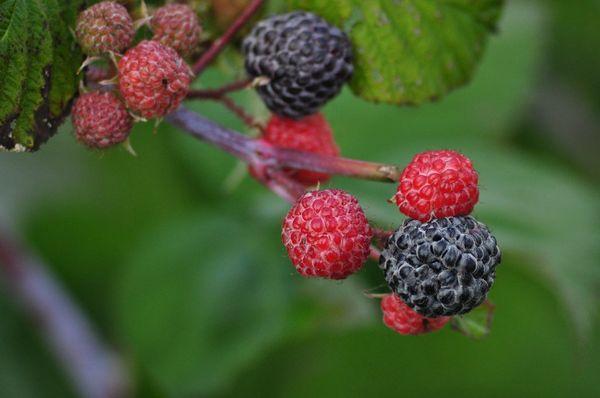
Diseases and pests of black raspberries
Black raspberry bushes are distinguished by good immunity against most diseases inherent in the genus Rubus, they are resistant to drought and pests. Even if it grows next to other varieties of raspberries, and they are sick, the black berry bushes may not become infected. But preventive measures with insecticides and fungicides should be carried out every spring and autumn.
The main pests of black raspberries:
- spider mite;
- aphid;
- kidney or protoxide mole;
- weevil;
- gall midge;
- stem fly;
- glass butterfly;
- harmful centipede;
- nematodes;
- raspberry beetle or tick.

Diseases specific to black raspberries:
- powdery mildew;
- gray rot;
- anthracnose;
- mosaic;
- rust;
- root, stem cancer;
- white, annular, purple spotting;
- curliness.
So that plants do not become infected with diseases and do not attract pests, they and other crops on the site are treated with drugs and potential pathogens are eliminated: fallen leaves, diseased plants, weeds. Preparations: "HOM", "Actellic", Bordeaux mixture, "Karbofos", "Fitoverm", "Fitosporin".
How to plant a black raspberry bush on the site
A black raspberry seedling can be purchased in proven nurseries or specialized stores, and if there are already several of your own bushes on the site, then propagate them.
Optimal timing
Planting of black raspberries is carried out in spring, summer, autumn, but the climatic zone should be taken into account. The most favorable period for the rapid adaptation of seedlings, in which the growing season begins early, is spring, in March in the south of the country, in April-May, the middle strip, the Urals, Siberia. In the summer, you can also plant if suddenly the penetrating crown has sprouted and was accidentally cut, but such a plant will take longer and more difficult to adapt.
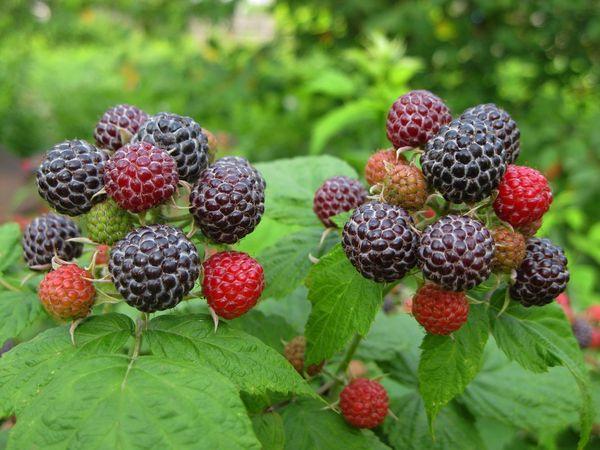
The optimal time for planting in autumn in the southern regions is until the end of October, in the middle lane until the end of September. In colder regions with a sharp change in climate, it is better to refuse planting in the fall, but if seedlings were purchased, then after planting they should be carefully mulched.
It is important to remember that black raspberries are less resistant to sudden temperature changes and severe frosts.
Preparation of the planting hole and seedlings
For better growth and getting used to new conditions, the seedling should be planted in a place where nightshades have not grown before; ideally, the land should rest for a year. You can plant it next to other varieties of raspberries, but it should be borne in mind that the usual one will quickly clog the planting of black raspberries in 2-3 years.
A plot for cultivation is dug up in the fall, applying organic fertilizers, green manure, rotted manure, and droppings.
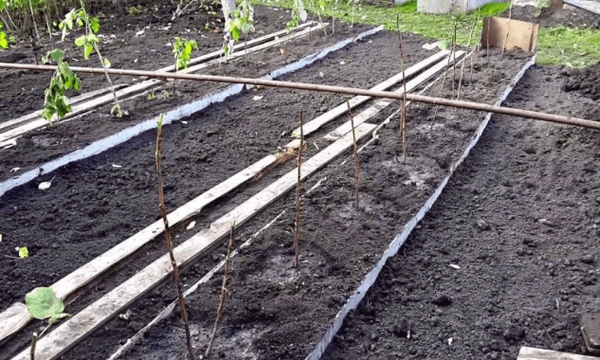
In the spring, they dig a hole 40-50 cm deep, up to 50 cm in diameter. If the site is often flooded or the soil is heavy, wet, then a layer of drainage and sand is laid on the bottom. The rest of the soil is mixed with organic fertilizers, ash, peat, rotted sawdust. The third part of the mixture is placed on top of the sand. A seedling is planted from the root collar by 4-6 cm, in the center of the pit and sprinkled with soil mixture, lightly pressing down and watering from above.
If the soil is heavy, then it is better to water it in half: part in the hole, part after planting.
The place should be sunny from the east or south side of the infield, without drafts.The seedling is placed in a bucket of warm water a day before planting; growth or root formation stimulants can be added. Before planting, 30-40 minutes for disinfection in a manganese solution, if the seedling has not been soaked in stimulants.
Technology and seating schemes
The technology and scheme of planting black raspberries are used the same as for other species and varieties of the genus Rubus.
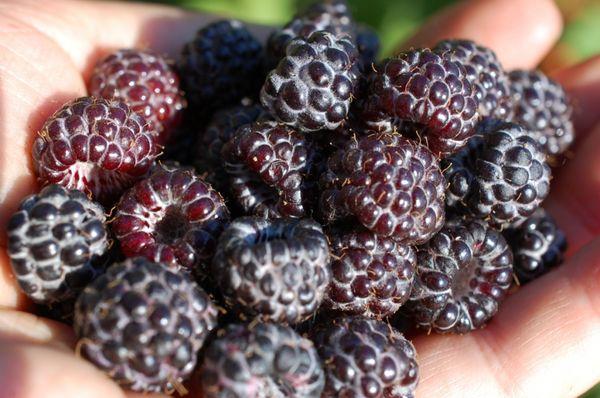
The correct method will guarantee the gardener a high yield.
| Scheme | Description |
| Single row | Suitable for planting around the perimeter of the territory or for farms. Dig a long ditch up to 40 cm deep and plant black raspberry bushes at a distance of 80-100 cm |
| Double row | Similar to a single-row scheme, only the distance between the first and second ditch is about 50-70 cm, row spacing is 1.5-2 m |
| Trench | The same as the single-row, but the depth of the planting ditch is more than 60 cm, since layers of organic matter are laid on the bottom for the future nutrition of the bushes |
| Dimple | Often used in individual gardens when the number of seedlings is small |
| Nesting | It involves planting bushes in a small circle, like a nest. Circle diameter 100-120 cm, distance between bushes 50-80 cm |
| Curtain | Suitable for regions with unfavorable climatic conditions. Plants are planted close to each other, creating natural thickets that are more likely to survive the cold winter. |
For planting in an ordinary garden plot of 6 acres, it is optimal to use a pit pattern. For example: plant seedlings along the fence at a distance of 50-80 cm between the bushes, not picking up shoots, but leaving them bent to the ground. Only by giving the direction of all shoots in one direction: left or right. After a year, the shoots will begin to sprout, they are cut and planted between the old bushes, and their branches are directed in the opposite direction. Thus, the bushes will gradually move through the garden.
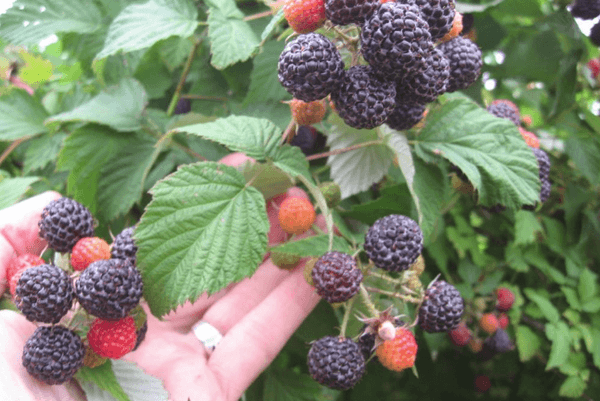
Nuances of culture care
Black raspberries are unpretentious in care, they can do without watering for a long time and bring a solid harvest, it is suitable for growing summer residents who visit their site on weekends. Compliance with agricultural techniques of care will extend the life of the bushes and get a bountiful harvest.
Bush irrigation frequency
The first watering is carried out in the spring. If it was with light precipitation, then as soon as the soil warms up to +15 and frosts are not expected, each bush is moistened with 10-12 liters of warm water, you can add fertilizers, infusion of weeds, manure or nitrogen, phosphorus, potassium. Watering frequency is 1-2 times a week. During the flowering period, the number of times is increased to 3-4, especially if the weather is hot, without precipitation.
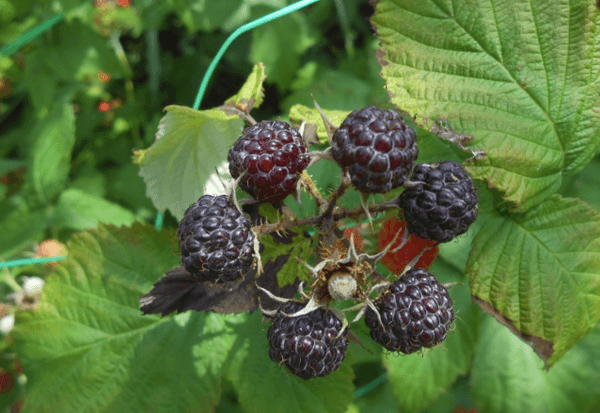
Reduce the frequency of irrigation during berry ripening. After harvest, the frequency is 1-2 times every 2 weeks. Before sheltering for the winter, 2-3 weeks before the expected frost, watering is finished. Watering the bushes too often can harm crops and cause disease.
Loosening the soil
Loosening of the soil is carried out 1 time in 1-2 weeks, usually this happens when weeding weeds, in dry weather or 1-2 days after rain, watering, this allows you to make the soil breathable.
The principle of trimming and shaping
The first pruning occurs when young shoots grow more than 2 m, they are shortened to 1.6-1.8 m, this gives an impetus for the growth of lateral shoots, they are pruned in the fall, leaving 20-30 cm. Old shoots that have borne fruit are removed in the fall in late September - early November.
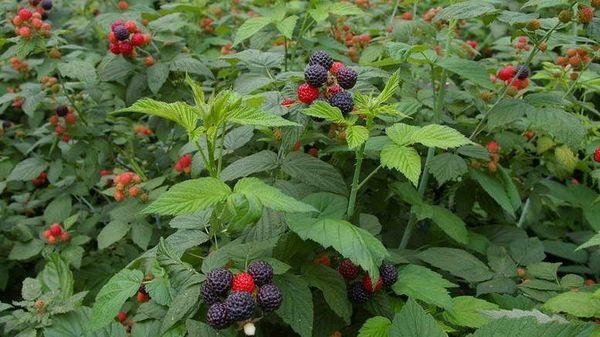
How and what to feed black raspberries
During the growing season, black raspberries require a greater amount of nitrogen, phosphorus, calcium, so you can feed them with complex acquired fertilizers, urea, or add rotted manure, ash, peat, and the topsoil from the forest to the soil.
In summer, along with watering for abundant fruiting at the flowering stage, nitrophoska and chicken droppings are introduced.In the fall, the soil is mulched with phosphorus-potassium fertilizers, adding chlorine, fluff, siderates.
Preventive treatments
To exclude infection of plants with diseases or pests, the soil around the bushes is spilled with a weak solution of manganese, lime, copper sulfate, TMTD, boiling water, "Fitosporin", sprayed with a Bordeaux mixture.
Reproduction of black raspberries
Reproduction of black raspberries is carried out in several ways: by cuttings, branches, dividing the bush, offspring - these methods retain the properties of the parent bush, but the seed method may not convey these qualities. Cutting allows you to quickly breed raspberries in the country.
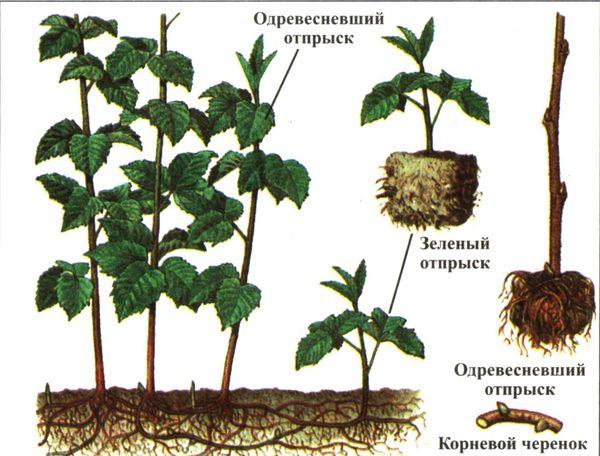
Layers
Reproduction of black raspberries by layering is the easiest way, two-year shoots after fruiting are bent to the ground with a drooping crown and sprinkled with fertile soil 2-3 cm. Shoots begin to germinate after 2-4 weeks, in October they are cut off from the main bush or in early spring.
Root offspring
Black raspberries reproduce poorly with root suckers, since they take longer to lay than in red varieties. It is better to take an offspring located at a distance of at least 20-30 cm. Cut with a sharp pruner from the parent bush and planted in a new place.
Green and woody cuttings
Green cuttings are prepared from young shoots in late spring, early summer, the crown is removed, cutting them 15-20 cm long, treated with a root stimulator and planted in separate containers with a nutrient substrate or in a greenhouse. In spring, rooted plants are planted in open ground.
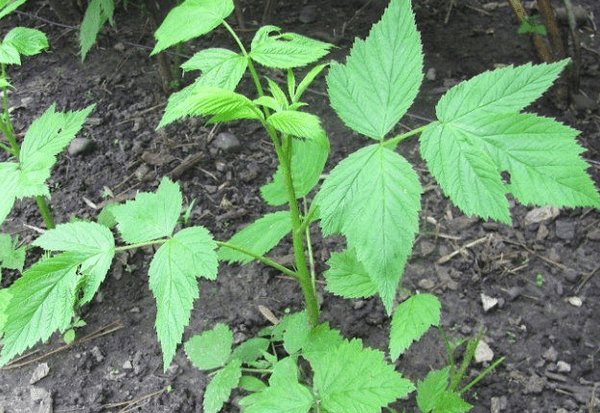
Lignified shoots are cut according to the same principle, but in the fall. Wrapped in polyethylene and put away in a cool place until spring. In March-April, viable ones are selected and planted in open ground under a glass jar or separate containers, which must be covered with polyethylene to maintain high humidity. In the fall or next year, in the spring, they are planted in open ground.
Seeds
The seed method is the longest. In the fall, dried berries are collected on a bush and laid out in the refrigerator for seed stratification for 1 month. Then they are sown in containers with soil mixture and covered with glass, creating high humidity and heat. When 2-3 leaves appear on the seedlings, gradually open the lid, adapting them. As the seedlings grow, they are transplanted into separate volumetric pots. Ready-made plants can be transplanted into open ground after a year, in spring.
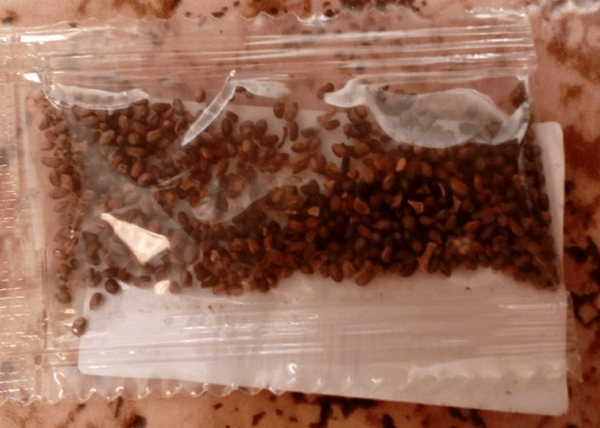
Popular varieties of black raspberries
Breeders have developed many varieties that can grow in different climatic zones and bring a large harvest. One of the best varieties described by gardeners is the Cumberland raspberry, which comes with yellow and black fruits:
- Cumberland is the most popular and unpretentious mid-term variety. Berries are collected in 10-12 pieces. in the brush. Polyokostyanka up to 2 g, small, from a bush yield up to 10 kg. Resistant to drought, frost down to -30. The leaves are larger than those of other similar varieties, with a glossy surface.
- New Logan is an early variety, high-yielding, up to 10 kg per season of berries. Requires shelter in winter temperatures above -24. Medium-sized berries up to 3 g.
- Bristol is one of the varieties resistant to drought, frost down to -30 and disease. Collect up to 5 kg from the crop bush. Fruits are black with a bluish bloom, medium ripening.
- Coal - resistant to diseases, pests and prolonged weather without rain. It tolerates frosts down to -30. Productivity up to 8 kg, medium berries, 2-3 g.
- Boysenberry - medium-sized elongated berries, raspberry-blackberry sweet taste without acidity. High-yielding medium-ripening variety. Withstands frosts down to -25.
- Litach is a young Polish variety, mid-season, high-yielding, but requires shelter, since the permissible temperature is -23.
- Black Jewelo - the branches of the first year bush are green with a white milky bloom. Early ripe variety, late June - early July, high-yielding, fruits up to 2.5 g. The bush is very spreading, 8-10 shoots per season.
